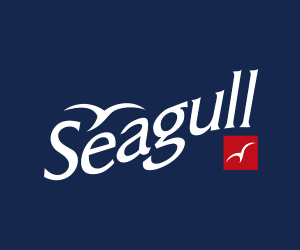DHL has released “Rethinking Packaging”, a new Trend Report that offers a comprehensive look at the future of packaging in the logistics industry.
The report breaks down the trends accelerating the need to rethink packaging, how industries and their packaging needs are evolving, and provides insights on how packaging innovations will shape greener and more efficient logistics operations across all sectors.
Driven by globalization and e-commerce, the overall volume of products shipped is rising, and packages are traveling further through longer, more complex cross-border logistics networks.
A survey conducted by DHL on its customers and partners shows that for nine out of 10 companies, packaging will play an important role in the next three to five years. Fast-tracked deliveries and increasingly popular subscriptions services result in frequent single-item shipments, contributing to more carbon emissions and packaging waste.
The expanded variety of e-commerce products has led to new challenges in shipping and packaging. Surveyed customers see themselves confronted with maintaining a reasonable spend on packaging, the number of shipments damaged in transit, as well as optimizing the available transport capacity.
Demand for more sustainable shipping is driving new efforts to minimize waste, promote green materials, and implement convenient recovery systems. Leading retailers are answering these expectations by providing hassle-free and recyclable materials, capitalizing on the new opportunity to delight the customer with aesthetically pleasing accessible packaging features.
Matthias Heutger, SVP, Global Head of Innovation & Commercial Development, DHL, explains: “The Trend Report and our customer survey illustrate just how important easy, recyclable, and robust packaging is to an overall positive customer experience.
The acceleration of changing needs of companies, consumers, and the wider environment however increase costs and reduce effectiveness. We believe that the adoption of new packaging optimization tools, materials, and handling technologies will significantly boost efficiency and productivity. That in turn, will drive changes in the operation of supply chains and logistics processes.”
Across industries, increasing demands are being placed on packaging. In the automotive and technology sectors, supply chains must evolve to accommodate growing volumes of delicate, high-value components.
In healthcare, logistics professionals must ensure safe and compliant delivery of lifesaving medicines and devices to hospitals, communities, and patients’ homes. As e-commerce usurps traditional retail, the package on the doorstep is now a critical touchpoint between consumers and brands.

Implications for the logistics industry
The logistics industry will play a key role in reducing the cost, inconvenience, and environmental impact of packaging. It must adopt new technologies, materials and processes across the value chain:
- Packaging optimization
Shipments that are not completely filled up are a major cause of product damage and detriment to cost and sustainability measures. Therefore, companies are introducing software that expertly calculates the best possible ratio of items, cartons, and pallets and then communicates the results directly to pickers. OptiCarton for example, DHL’s innovative package density optimization tool, maximizes carton and pallet space by more efficiently selecting and arranging packages based on size and weight.
- Packaging automation
Automated unloading processes, end-of-line packing and labeling systems, and collaborative robots to relieve the burden of seasonal packaging and hiring needs will enable companies to balance the growing e-commerce market with an aging workforce.
- Sustainable packaging material
In the DHL customer survey, the majority of respondents said that the introduction of sustainable packaging materials is their number one near-future packaging priority. Research into green alternatives to plastic shrink wrap and single-use plastic envelopes, as well as sustainable groceries’ packaging is ramping up while at the same time, balancing cost and customer convenience is proving challenging for retailers.
- Reusable packaging and reverse logistics
The adoption of reusable materials and closed-loop recycling programs to eliminate waste has increased lately, some challenges however remain. Industries considering building an economically viable reusable packaging system need to think about required size of the packaging material pool, the design of systems for cleaning, inspecting, and maintaining containers, and the cost, speed, and ease of use of reverse logistics processes.
- Smart packaging
Smart-packaging technologies such as smart labels or tags and last mile product protection measures strengthen the connection between the customer, the supply chain, and the package via real-time updates on its condition and location.
The Trend Report demonstrates that the entire purpose of packaging has evolved. Reaching the next step in packaging performance will require close collaboration between supply chain experts, packaging specialists, and customers.

















































